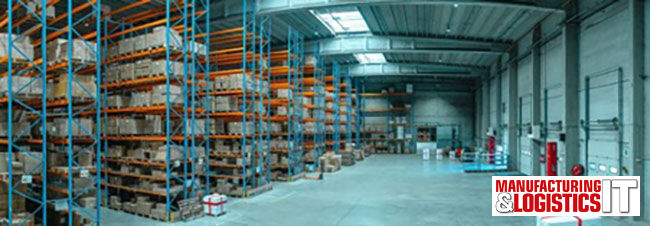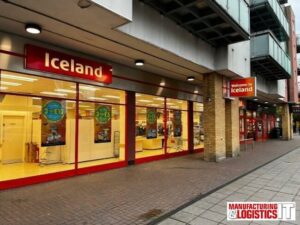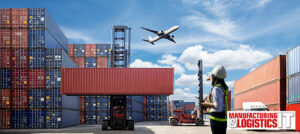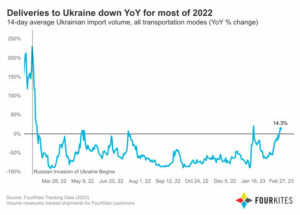By Hugo Forster, freelance writer.
For over a century, businesses have relied on highly efficient, linear supply chains to fulfill their needs. Raw materials were provided at one end, transformed into a product, used, and discarded as waste.
With consumer preferences evolving at a rapid pace, and companies being held accountable for their sustainability claims, there is increased pressure to better understand the product journey through a supply chain, from sourcing raw materials to the technology used to deliver product to customers - such as label printers.

What is Supply Chain Traceability?
Supply chain traceability refers to how a business tracks its products from sourcing to production to the retail shelf. The ability to trace this process is vital for any successful business as it allows them to trace the lifecycle of their products and offers insight on how to improve it.
Traceability ensures accountability, transparency, and sustainability for all parties involved. A company can better predict market trends and optimize its operations using the data collected through this process. Furthermore, leadership teams can serve customers better, respond faster to change, work more efficiently, and reduce unnecessary waste or resource consumption.
Finally, a company can identify valuable chain opportunities, innovate faster, and reduce internal and external disruptions while being able to certify sustainable business practices confidently. With the business world changing at a rapid pace post-pandemic, if a company is unwilling to change with it, it will find itself on the outskirts of the corporate world.
Starting Steps of Implementation
Supply chain traceabilty is a massive advantage to any company, but it can be daunting during the implementation stages. To make the process more manageable, there are three initial steps a business can take to start the process.
First, a business must assess the immediate risks it is exposed to, including compliance issues, previous disruptions, and supplier relationships. These risks must be included in the strategies and goals to improve and maintain a high-performance level moving forward.
Once these risks have been identified, an end-to-end supply chain needs to be visualized and mapped. By doing this, unique insights into the specific steps of the chain can be understood on a deeper level, revealing any gaps, risks, or opportunities for further improvement.
Finally, businesses must set clear parameters for the disclosure of information gathered. There is a tricky balance between regulatory requirements and stakeholder demands that need to be maintained, and any published data needs to have proven authenticity.
Stakeholders must support any transparency technology, and the information collected must provide actionable insight that can be circulated amongst the necessary parties involved.

Benefits of Traceability
To reap the rewards that come with supply chain traceability, namely regulatory compliance and increased reputation, it is crucial that a company connects this traceability to the business objectives it has created for itself. This will ensure maximum benefits are met.
Additionally, consumers are showing higher levels of interest and loyalty toward brands with increased visibility and ethical business operations. In most industries, companies still operating with limited visibility are being outperformed by their competitors.
Improved Supply Chain Integrity
Supply chain visibility can also prevent fake or low-quality products from entering your production line and confirm the authenticity of the products you receive. In addition, this provides further visibility to reused, recycled, or recalled goods.
As the entire lifecycle of the item is documented, from the raw material being sourced to the customer buying the end product, supply chain bottlenecks can be removed, and the quality and safety of an item is ensured.
Simplify Audits
Increased tracking management of products will pay off at the time of an audit. The auditor will be able to perform their job quickly and verify products have been sourced, manufactured, and transported following the established guidelines and norms.
Track Product Management
Traceability programs and tracking management systems constantly collect data within their supply chain or across multi-supplier networks from start to finish. This data contains vital information that must be recorded for verification and auditing purposes.
The captured information will include processing details, quality checks performed at each step, manufacturing logs, and tracking notes. It is crucial that this information is correctly logged, as any mistakes can jeopardise the company's reputation and could lead to legal issues and auditing problems.
Reduced Risk of Mislabelling
Digitising labels like barcodes and RFID tags that contain the necessary information for tracking and tracing a product throughout the production process allows the data to be automatically collected by the software and eliminates the chance of human error.
It will further help to identify any faulty product that uses fake or poor-quality materials. This assures the genuineness of the item and the company, and prevents any mislabelling from occurring.

Sparks Collaboration
No company, regardless of size or resources available, can collect all the relevant information it needs to understand traceability fully. To get the total value of data sharing, companies will need to create partnerships to increase their individual competitive edge and the overall community ecosystem.
Collaboration is an integral part of business, and many big firms understand this but struggle to forge a strong alliance. However, the mutual benefit that stems from this collected data makes cooperation easier.
- SEO Powered Content & PR Distribution. Get Amplified Today.
- Platoblockchain. Web3 Metaverse Intelligence. Knowledge Amplified. Access Here.
- Source: https://www.logisticsit.com/articles/2023/03/30/supply-chain-traceability-what-every-business-should-know
- :is
- a
- ability
- Able
- accountability
- across
- addition
- ADvantage
- All
- Alliance
- allows
- amongst
- and
- ARE
- AS
- assures
- At
- audit
- auditing
- authenticity
- automatically
- available
- Balance
- BE
- being
- benefit
- benefits
- Better
- between
- Big
- brands
- business
- business operations
- business practices
- businesses
- Buying
- by
- CAN
- Century
- certify
- chain
- chains
- Chance
- change
- changing
- Checks
- claims
- clear
- collect
- COM
- come
- community
- Companies
- company
- competitive
- competitors
- compliance
- confidently
- Confirm
- connects
- constantly
- consumer
- Consumers
- consumption
- contains
- cooperation
- Corporate
- could
- create
- created
- crucial
- customer
- Customers
- data
- data sharing
- deeper
- deliver
- demands
- details
- disclosure
- disruptions
- doing
- during
- each
- easier
- ecosystem
- Edge
- efficient
- efficiently
- eliminates
- end-to-end
- ensure
- ensures
- Entire
- error
- established
- ethical
- Ethical Business
- Every
- evolving
- exposed
- external
- fake
- faster
- faulty
- Find
- finish
- firms
- following
- For
- forge
- Forward
- freelance
- from
- Fulfill
- fully
- further
- Furthermore
- get
- Goals
- goods
- guidelines
- Have
- Held
- help
- high-performance
- higher
- highly
- How
- How To
- However
- HTTPS
- hugo
- human
- identified
- identify
- immediate
- implementation
- improve
- improvement
- in
- include
- included
- Including
- Increase
- increased
- individual
- industries
- information
- initial
- innovate
- insight
- insights
- integral
- interest
- internal
- Investopedia
- involved
- issues
- IT
- ITS
- itself
- Job
- journey
- jpg
- Know
- Labels
- lead
- Leadership
- Legal
- Legal issues
- Level
- levels
- lifecycle
- like
- Limited
- Line
- Loyalty
- maintain
- make
- MAKES
- management
- manufactured
- manufacturing
- many
- Market
- Market Trends
- massive
- material
- materials
- maximum
- mistakes
- more
- most
- moving
- mutual
- namely
- necessary
- Need
- needs
- networks
- Notes
- objectives
- of
- Offers
- on
- ONE
- operating
- Operations
- opportunities
- Optimize
- overall
- Pace
- parameters
- part
- parties
- partnerships
- Pay
- perform
- plato
- Plato Data Intelligence
- PlatoData
- post-pandemic
- practices
- predict
- predict market
- preferences
- pressure
- prevent
- previous
- problems
- process
- processing
- Product
- Production
- Products
- proven
- provide
- provided
- provides
- published
- purposes
- quality
- quickly
- rapid
- Raw
- receive
- recorded
- reduce
- refers
- Regardless
- regulatory
- Regulatory Compliance
- Relationships
- relevant
- Removed
- reputation
- Requirements
- resource
- Resources
- Respond
- retail
- revealing
- Rewards
- Risk
- risks
- s
- Safety
- serve
- set
- sharing
- Shelf
- should
- Size
- Software
- Sourcing
- specific
- stages
- stakeholder
- start
- stems
- Step
- Steps
- Still
- strategies
- strong
- Struggle
- successful
- such
- supply
- supply chain
- Supply chains
- support
- Sustainability
- sustainable
- Systems
- Take
- teams
- Technology
- that
- The
- the information
- their
- Them
- These
- three
- Through
- throughout
- time
- to
- Total
- toward
- trace
- Traceability
- Tracing
- Tracking
- transformed
- Transparency
- transported
- Trends
- understand
- understood
- unique
- Valuable
- value
- Verification
- verify
- visibility
- vital
- Waste
- What
- while
- will
- with
- within
- Work
- world
- writer
- Your
- zephyrnet












